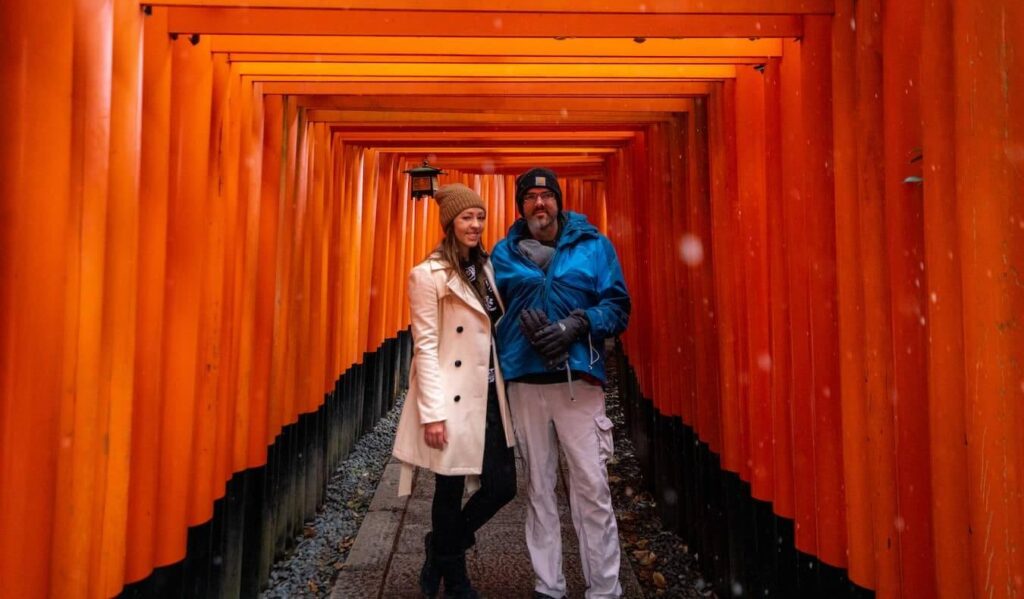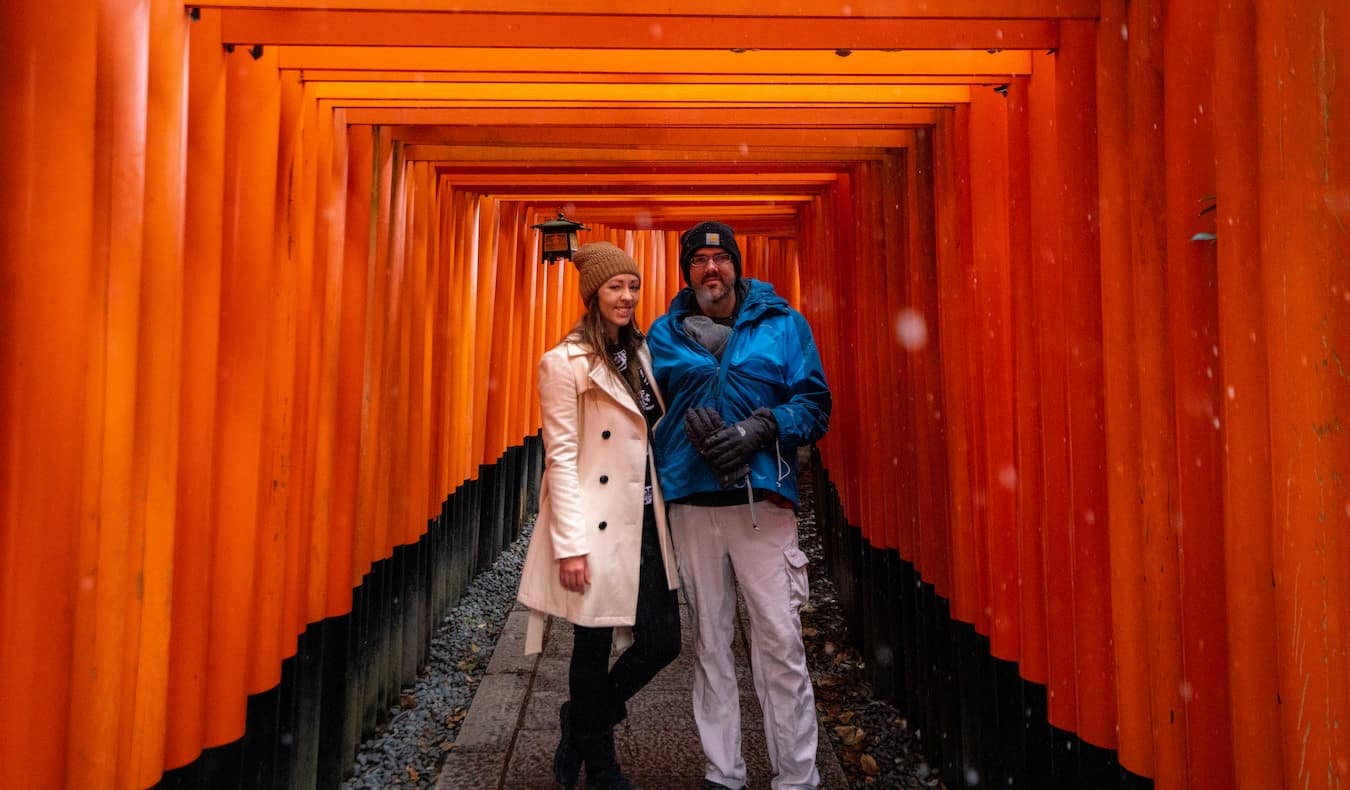
Posted: 10/9/2023 | October
I love Japan. It’s one of my favorite countries in the world. But is it a suitable destination to visit with a baby? Solo female travel expert Kristin Addis from Be My Travel Muse was recently there with her baby and has tons of tips and advice for travelers thinking of taking a baby with them to Japan.
Japan was our first major international trip with our then six-month-old. I’d heard mixed things about how baby friendly Japan would be, from DMs telling me it wouldn’t be a great trip to the total opposite with people gushing about how baby friendly it was.
We decided to go for it, hitting four spots in two weeks, taking public transportation and staying in a mix of apartments and hotels. Traveling with a baby in Japan comes with some special considerations, but overall, it can be a great trip IF you plan it right. Here’s everything to know:
Japan Baby and Toddler Friendliness
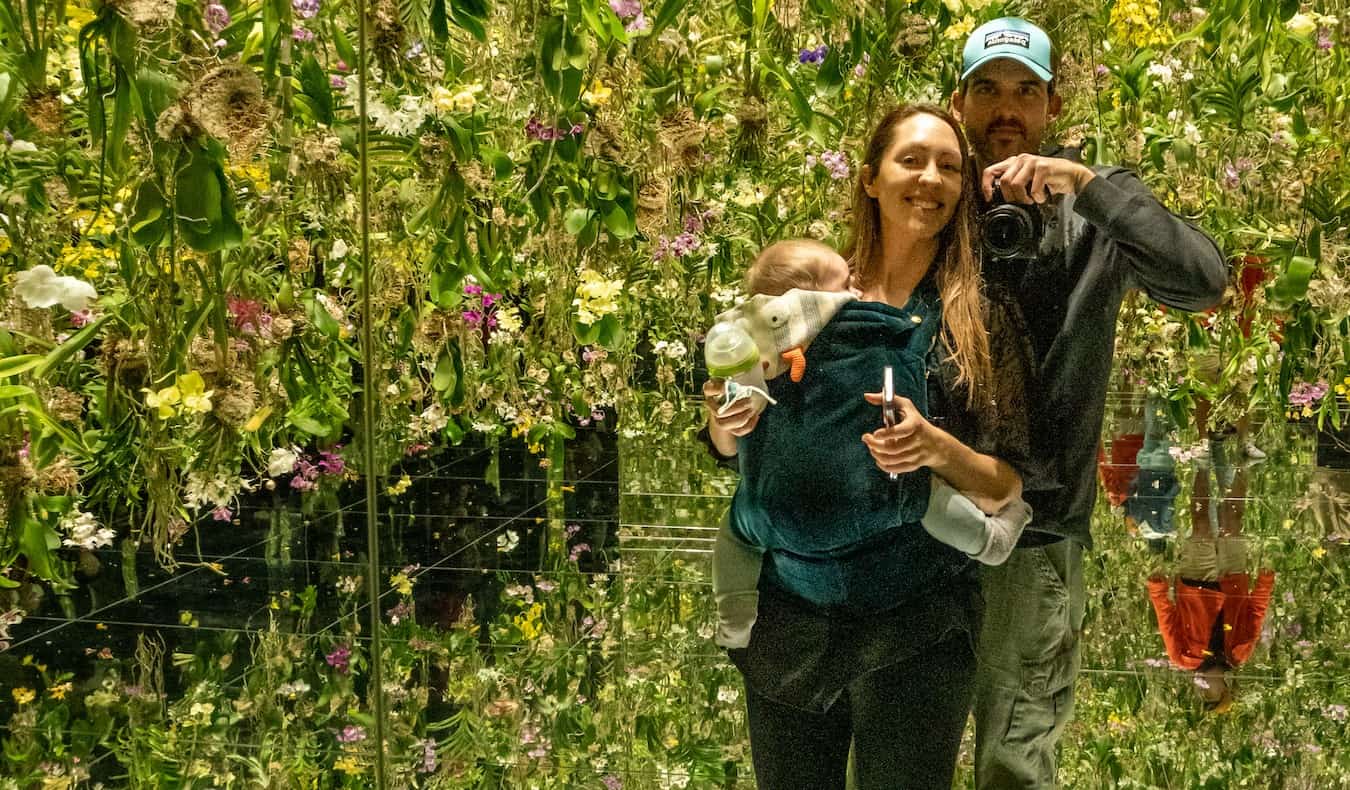
With a few strange exceptions, like the lack of cribs, Japan is one of the most baby and family-friendly places I have been. It all started when we were personally escorted to the aircraft by a Japan Airlines gate agent when boarding our flight to Osaka. They even offered me a place to sit with the baby while I waited. It felt like first class treatment.
Each time we encountered an airport queue in Japan, whether it was for security or boarding, they always had a family line, which is sadly missing from every US airport I’ve encountered.
There are family restrooms everywhere as well, and I really mean everywhere. Even the smallest metro and train stations had them, and I never encountered one that wasn’t sparkling clean. People respected that they were only meant for those with disabilities and young children, as well. I never had to wait to use one and never saw an able-bodied single person walk out of them, which I see all the time in the US.
The bathrooms are also full of useful items like a baby holder, which I’ve only otherwise seen in Singapore, changing tables, and padded benches for nursing. I’ve truly never seen a family bathroom as equipped as the ones in Japan.
The locals also LOVED our baby. Everywhere we went, people would play peek a boo with him, smile at him, and light up when they saw him. We felt very welcome everywhere we went with him.
Getting Around Japan with a Baby
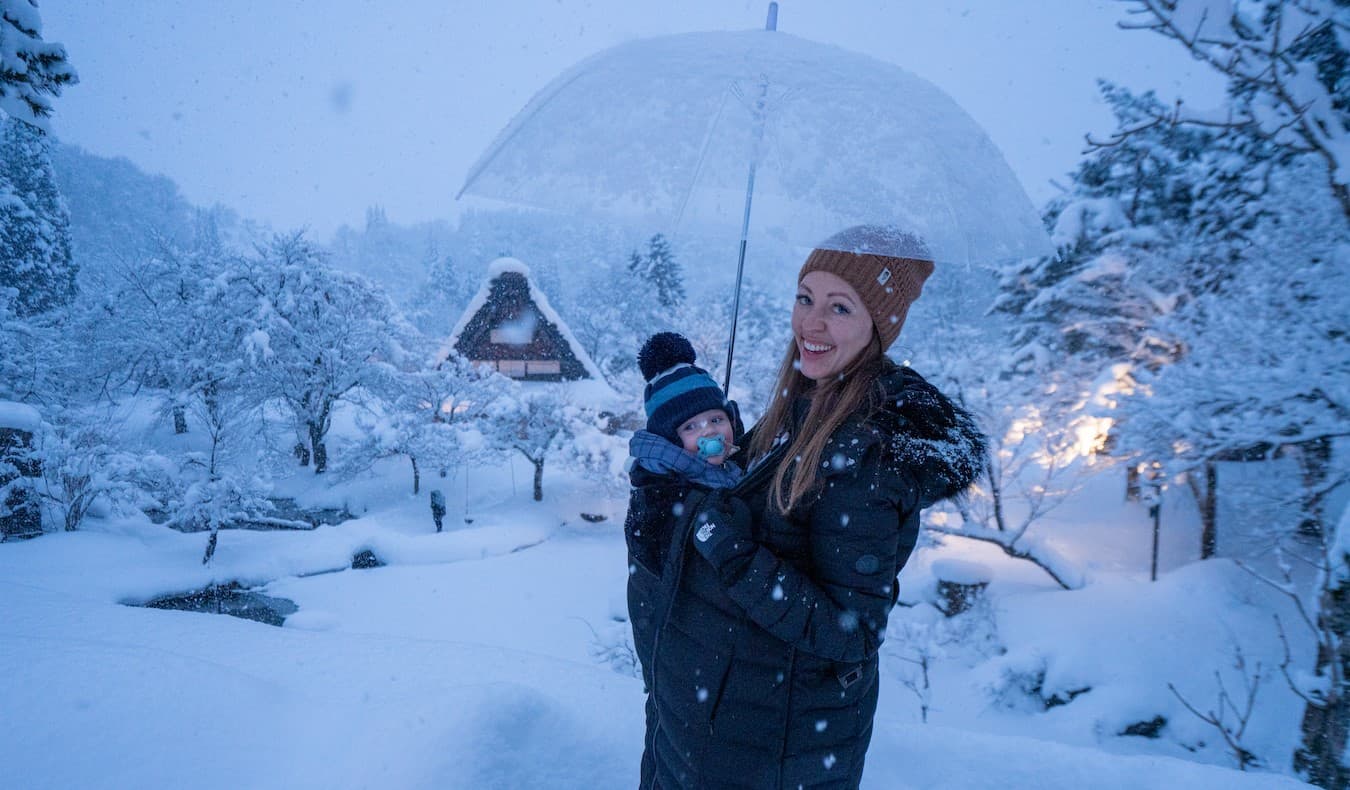
Generally, planning fewer things is easier than a packed itinerary when traveling with a baby anywhere in the world. This is especially true for Japan where you’re most likely taking a mix of trains and buses around the country. The more remote you’re going, the more connections you’re likely to have as well.
Although they’re more expensive, we tended to prefer train travel to bus travel in Japan so that we could make use of the changing tables on the trains. They were more spacious, and the buses rarely had a place to change diapers.
If you’re traveling during high season, be sure to book train tickets ahead of time and reserve seats to avoid having to stand with your baby.
Alternatively, consider renting a car to get around. They can be pricey, and if you’re North American you’ll be driving on the opposite side of the road, but it also gives you ultimate flexibility.
Packing Light is Wise for Japan
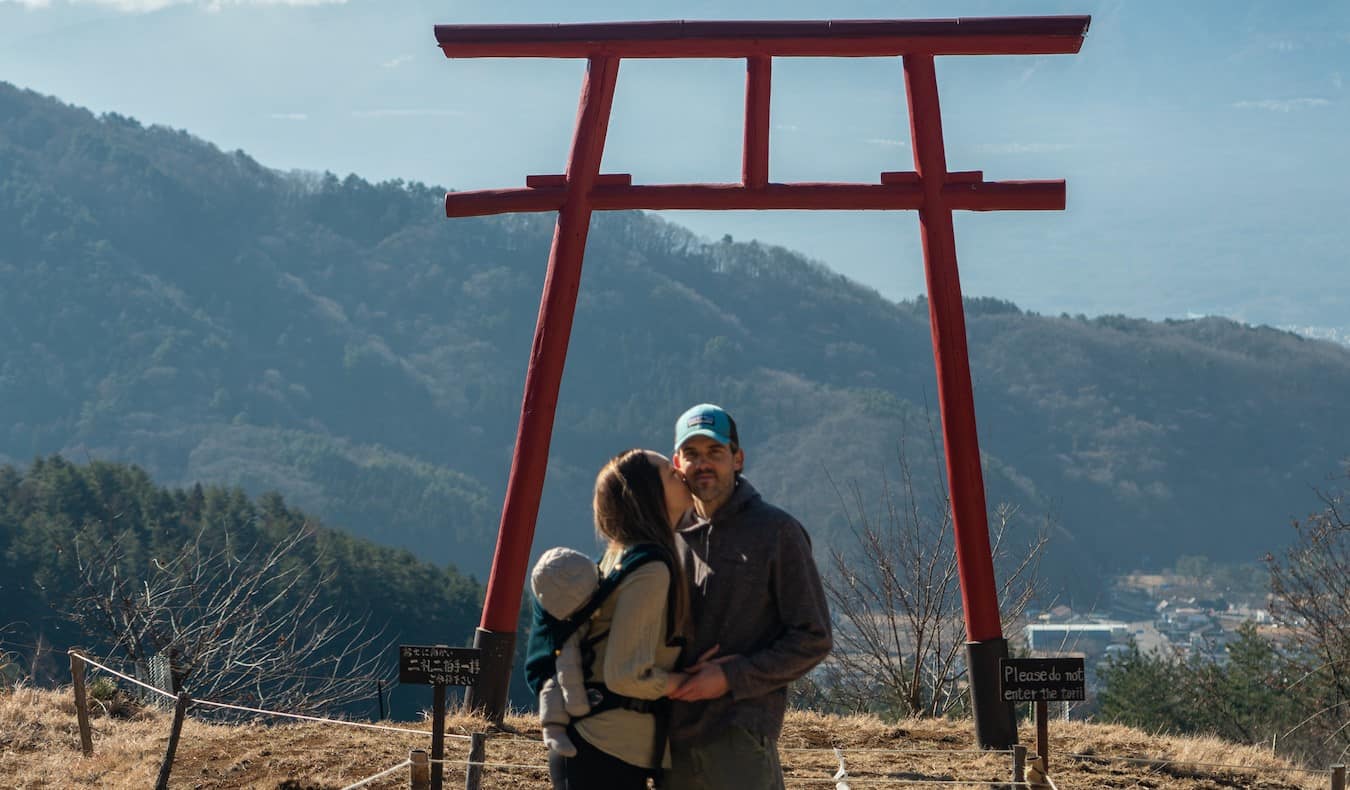
If you’ll be taking the Japan Rail and/or metro to get around, you’ll want to pack as light as possible. Realistically, only what you and whoever you’re traveling with can carry is going to work. This seems to be the biggest issue for families traveling in Japan. They pack too much and it impacts their trip enjoyment.
We opted to leave the stroller at home and just travel with a soft baby carrier. While a stroller can be helpful at times, Japan has a lot of stairs and some metro stations, even in Tokyo, don’t have elevators. We always found them at JR stations, though.
I have mixed feelings about this decision as we were aching by the end of the trip. If I were to do it with a toddler or older baby I’d probably opt for a hiking baby carrier instead. It distributes weight better and is a more comfortable experience, plus they have storage space. Just keep in mind that they’re bulky and you’ll most likely need to remove it when using public transport.
If you absolutely have to bring more than you can physically carry, there are luggage forwarding services in Japan that can help transport your luggage from hotel to hotel for you.
Renting Baby Gear in Japan
Since our baby was a bit younger and not yet mobile when we visited Japan, we felt OK with not having a dedicated sleeping space and utilizing the floor beds instead. However now that he’s older, he needs a dedicated sleeping space and ideally a stroller. If we were to visit now, I’d utilize rental services to keep our suitcases light and still have access to the items we need for safety and comfort.
It’s possible to rent strollers in various cities in Japan, depending on how remote you’re going. You can also rent other baby gear in some parts of Japan, particularly in the more major cities.
Buying Baby Essentials in Japan
One way to pack lighter is to plan to buy baby essentials in Japan. It’s easy to find diapers, formula, and baby food if you know where to look.
If you’re doing baby-led weaning, which we were at the time, you can shop at any Japanese supermarket for fruit and veggies.
It was actually a treat to visit the grocery stores there since they had almost entirely different snacks and brands than I’ve seen elsewhere. The produce was also way better, as it was mostly locally grown. Even in the winter, we were eating perfectly ripe, locally-grown strawberries.
If you need diapers, baby food, or formula, you won’t find them at a grocery store. These items are for sale in drug stores only. Matsumoto Kiyoshi (with brown lettering) is the one we came across the most often.
Diapers were easy to buy. They will have the weight clearly displayed in kilograms. Jarred baby food and formula were in the same section of the store. If you need a specialized (non-cow) formula, that may be harder to find. Since we did for my baby, we brought enough with us from home for the whole trip.
Download the Google translate app so that you can hold your phone camera up to the Japanese Kanji and read what the ingredients and baby food flavors are. Don’t expect to see English translations in stores.
Choosing Where to Stay in Japan with a Baby
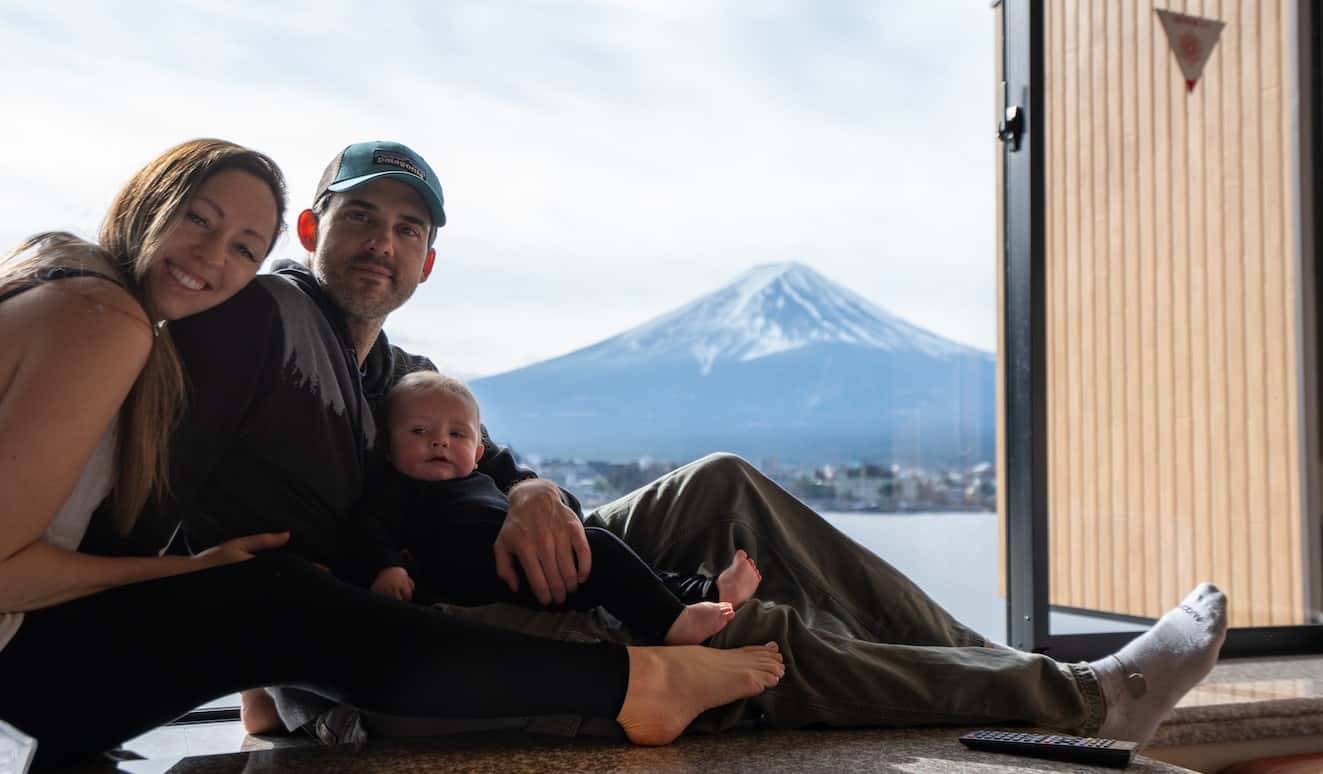
We did a mix of hotels and apartments in Japan and they both had their benefits.
Unless you’re willing to pay up a bit more, especially in Tokyo, you can expect hotel rooms to be on the smaller side. However they tend to include breakfast, which makes life easier for parents with young children.
Apartments, which you can book on Airbnb, usually have two floors and a kitchen. The kitchen was helpful for food prepping for the baby, and the two we stayed in had microwaves. I travel with microwave steam bags to sanitize our bottles, so this was a nice surprise.
The two floors also gave us a place to hang out while he took his naps. Apartment rentals are almost always larger, and in my experience, more affordable than hotel rooms can be. Sometimes they have washers and dryers as well.
Hot water kettles are a nice feature whether you’re in an apartment or hotel room. They seem to be the standard in Japan, which makes sanitizing, washing, and heating water for formula easier. Tap water in Japan is generally safe to drink and wash with.
Baby Sleep in Japan
The most bewildering and disappointing thing about traveling in Japan with our baby was the lack of cribs. Even in the 5-star ryokan we stayed at in Kawaguchiko, there was no baby crib on offer. It made me wonder what locals do. Do they bring their own? Do they co-sleep?
In half of the places we stayed, the beds were traditional-style mattresses on the floor, so it was fine for our baby to sleep on the floor mattresses, however now that he’s more mobile, I’d want to bring along our travel bed.
Feeding and Meals in Japan
One of the negative things I heard was that we’d be turned away from restaurants in Japan with our baby. While I’m sure it happens, I didn’t encounter this, even at kaiseki (which is the highest level of dining in Japan) restaurants. Sometimes they even had toys they’d bring out for our son.
We were told that the lounge in the hotel we stayed at in Tokyo wouldn’t be available to the baby in the evenings when alcohol was served, however. Some restaurants, including the Michelin star ones you might be hoping to eat at, could hold the same policy. There are some restaurants in Japan that are specifically geared towards families. The most common you’ll find are Bikkuri Donkey, Joyfull, and Gusto.
Most restaurants in Japan will have high chairs, but when at more casual ramen or yakitori restaurants, you’re less likely to come across them.
If you’re nursing, my sense in Japan was that it’s best done in private. I never saw anyone openly nursing in Japan, though I saw plenty of bottle feeding. The family restrooms are probably your best bet for a comfortable and private experience. I saw a nursing pod (a little room that offers nursing privacy, similar to the Mamava pods at US airports) at a few major train stations in Japan as well.
Medical Services in Japan
As a parent, I’m more concerned with the availability of healthcare services than I ever was before traveling with a baby. Thankfully Japan has a wonderful medical system with perfectly capable doctors.
I know this firsthand as I needed to visit a doctor in Kyoto when my asthma flared up. I was able to visit an international doctor at a clinic that services foreigners the same day. All of the medication the doctor prescribed was available there as well. In most cases they’ll want a cash payment which you can then submit to your travel insurance for reimbursement.
In non-emergency situations, look for a doctor that specializes in international patients as there can be language barriers. I was able to find mine easily on Google Maps. Otherwise, hospitals are widely available, even in smaller towns.
Overall, I loved traveling in Japan with our baby. The clean family bathrooms provided an easy place to change him, feeding and buying supplies were easy, and getting around was simple with such a well-connected rail system.
I was worried with so many stops and logistics that it might be a nightmare, but everything is so well-organized in Japan, it all worked out. Plus, the adorable interactions between our son and the locals made it a heartwarming experience.
Kristin Addis is a solo female travel expert who inspires women to travel the world in an authentic and adventurous way. A former investment banker who sold all of her belongings in 2012, Kristin has been traveling the world ever since. You can find more of her musings at Be My Travel Muse or on Instagram and Facebook.
Book Your Trip to Japan: Logistical Tips and Tricks
Book Your Flight
Find a cheap flight by using Skyscanner. They are my favorite search engine because they search websites and airlines around the globe, so you always know no stone is left unturned!
Book Your Accommodation
You can book your hostel with Hostelworld as they have the most comprehensive inventory so they are best for booking a hostel. If you want to stay in a hotel or guesthouse in Japan, use Booking.com as it consistently returns the cheapest rates for guesthouses and hotels.
Don’t Forget Travel Insurance
Travel insurance will protect you against illness, injury, theft, and cancelations. It’s comprehensive protection in case anything goes wrong. I never go on a trip without it, as I’ve had to use it many times in the past. My favorite companies that offer the best service and value are:
Looking for the Best Companies to Save Money With?
Check out my resource page for the best companies to use when you travel! I list all the ones I use to save money when I travel — and I think they will help you too!
Be sure to check out the Japan Rail Pass if you’ll be traveling around the country. It comes in 7-, 14-, and 21-day passes and can save you a ton of money!
Looking for More Travel Tips for Japan?
Check out my in-depth Japan travel guide for more ways to save money; information on costs; tips on what to see and do; suggested itineraries, reading, and packing lists; and much, much more!

